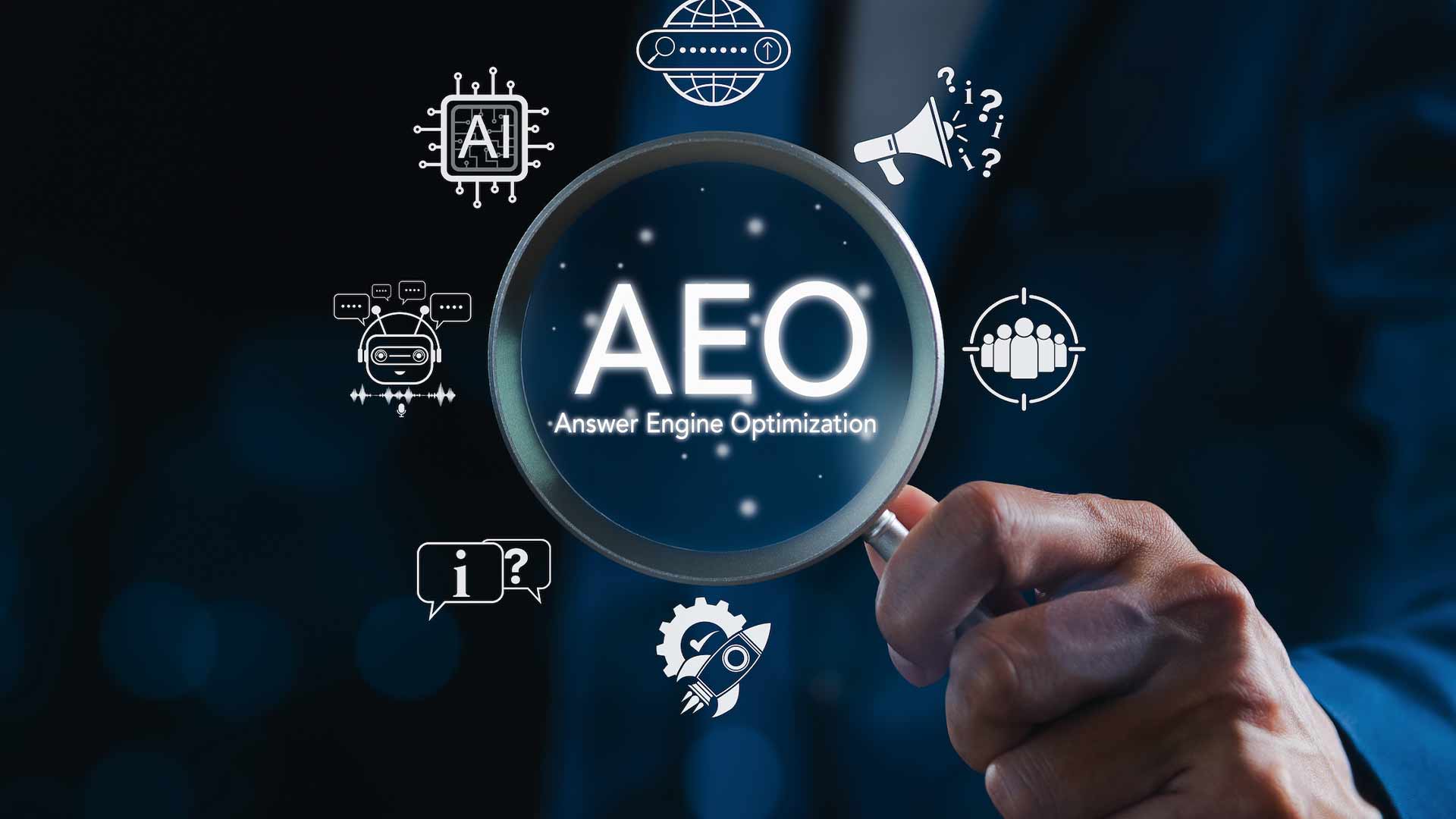
A Charlie Oscar Perspective on the Future of Discovery and Attention
The digital advertising landscape has been dominated by one truth for the past two decades: if you wanted to be found, you optimised for Google. Success meant mastering keywords, climbing rankings, and bidding strategically for prime real estate on the search results page.
That era is quietly drawing to a close. EMarketer is forecasting that AEO will account for 13.6% of all search budget in the US by 2029. That’s an increase from 0.7% of budget in 2025.
Consumers aren’t simply searching anymore – they’re conversing. They’re asking AI assistants for recommendations, seeking advice from chatbots, and trusting machine intelligence to guide their purchasing decisions. Large Language Models like ChatGPT, Claude, and Perplexity have become the new frontier of brand discovery, fundamentally altering how people find and evaluate products and services.
This transformation from search engines to answer engines represents more than a technological upgrade. It’s a complete reimagining of how brands earn visibility and capture attention in the digital ecosystem.
LLMs vs Traditional Search
Traditional search operates on a simple premise: present users with ranked options and let them choose. Visibility was a numbers game – secure a top position, whether through SEO prowess or advertising spend, and traffic would follow. The entire industry was built around this linear model of discovery.
LLMs have shattered that framework entirely.
When someone asks an AI assistant about “the best project management tools for creative agencies” or “sustainable fashion brands worth supporting,” they don’t receive a list of ten blue links. Instead, they get a synthesised, conversational response that feels like advice from a knowledgeable friend – complete with specific brand mentions, reasoned recommendations and links to click. Every response relates to the “context window,” which tailors the specific response to each individual.
The brands that appear in these AI-generated responses gain unprecedented credibility. Those that don’t might as well not exist.
This shift creates a new form of digital real estate – one that can’t be bought with higher bids (at least not yet) or gamed with traditional technical optimisation tricks.
What is AEO?
AEO (Answer Engine Optimisation) is the evolution of traditional SEO. It provides searchers with the information they require typically as part of a conversation in an LLM (Large Language Model) such as ChatGPT.
How AI Chooses Winners
Understanding what influences AI recommendations requires looking beyond traditional ranking factors.
Unlike Google’s algorithm, which primarily evaluates websites through technical signals like backlinks and keyword density, LLMs are trained on the entire internet’s worth of conversations, reviews, articles, and discussions.
They’re not ranking pages – they’re synthesising reputation.
AI models favour brands that demonstrate:
- Consistent presence across trusted sources: Regular mentions in reputable publications, industry reports, and expert analyses carry significant weight.
- Authentic user advocacy: Genuine customer reviews, social media discussions, and user-generated content create the foundation of AI trust.
- Thought leadership and expertise: Original insights, research, and authoritative content establish brands as reliable sources of information.
- Cultural relevance: Brands that participate meaningfully in industry conversations and current trends maintain visibility in AI training data.
Some of these tactics are evolutions of traditional SEO approaches. Some require entirely new tactics and workstreams.
Brands are only likely to succeed by excelling at both the old and the new.
The implications are profound. Success in an AI-mediated world depends less on technical optimisation and more on building genuine brand equity across multiple touchpoints.
The Attribution Challenge
Perhaps the most immediate challenge facing marketers is measurement. When someone encounters your brand through an AI recommendation and makes a purchase three days later, there’s no clear attribution path. No click-through data. No conversion pixel. No platform claiming credit.
This invisible influence represents a growing portion of the customer journey, yet most attribution models remain blind to it. The result? Brands consistently undervalue the very activities that drive AI visibility – content marketing, influencer partnerships, and brand-building initiatives that don’t generate immediate, trackable responses.
At Charlie Oscar, we’ve developed COmpass precisely to address this challenge. Our marketing science platform captures the full spectrum of brand interactions, revealing how seemingly disconnected touchpoints work together to drive growth.
We are already building LLM visibility metrics into our attribution models to allow brands to see what drives increased visibility and the business impact of that increase.
In an AI-first world, this comprehensive view isn’t just useful – it’s essential for making informed investment decisions.
The New AEO Playbook
Progressive brands are already adapting their strategies for this emerging landscape. The most effective approaches we’re seeing include:
- AI Presence Auditing: Regularly testing how a brand appears in AI responses across different queries and platforms. Understanding your current visibility is the first step towards improving it.
- Content That Converts Conversations: Moving beyond SEO-optimised articles towards genuinely valuable, expert-led content that gets referenced and shared. AI models favour depth over keyword density.
- Influencer Ecosystem Development: Recognising that influencer mentions often become AI training data. Building authentic relationships with credible voices in your space creates compound visibility benefits.
- Multi-Channel Narrative Consistency: Ensuring your brand story is coherent across all platforms, since AI models draw from diverse sources to form opinions about brands.
- Incremental Measurement: Shifting focus from last-click attribution to understanding how different marketing activities contribute to overall brand strength and customer acquisition.
Beyond the Algorithm
This transformation goes deeper than simply adapting to new technology. It represents a return to marketing fundamentals that many brands have forgotten in their pursuit of algorithmic optimisation.
Building genuine brand equity. Creating content that people actually want to consume. Earning authentic advocacy from customers and industry experts. These aren’t revolutionary concepts – they’re classic brand-building principles that happen to align perfectly with how AI systems evaluate and recommend brands.
The brands that thrive in this new environment won’t be those that crack the latest algorithmic code. They’ll be the ones that consistently deliver value, build trust, and maintain relevance across the entire digital ecosystem.
The Charlie Oscar Advantage
The shift towards AI-mediated discovery isn’t coming – it’s already here. Early adopters have a significant opportunity to establish strong AI visibility whilst their competitors remain focused on traditional search optimisation.
At Charlie Oscar, we’re helping ambitious brands navigate this transition through a combination of data science, creative strategy, and performance expertise. We understand that succeeding in an AI-first world requires more than tweaking existing campaigns. It demands a fundamental rethinking of how brands build presence, earn attention, and measure success.
The question isn’t whether AI will reshape digital marketing. It’s about whether your brand will be ready when it does.

